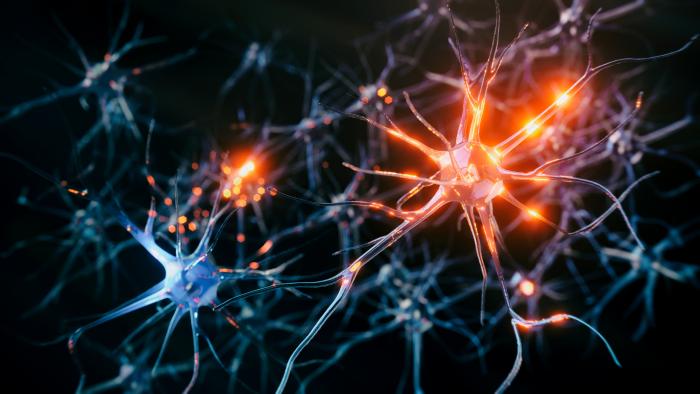Study Offers Novel Insights into How the Human Brain Recognizes Images
Findings show that neuron firing order matters, offering potential path forward for creating more efficient AI
A study by University of Maryland Assistant Professor Weizhen Xie and collaborators is among the first to show that when humans have to identify and categorize an image—such as seeing a dog and recognizing it as an animal rather than a human—it’s not just about how many times brain neurons fire. The order in which individual neurons fire—first, second, third and so on—also plays an important part in the process.
“Almost every time you read a neuroscience paper, they always count how frequently a neuron fires within a window of time, known as the spike rate. This has been the foundation of neuroscience for many, many years,” explained Xie. “But recently, an alternative way of thinking has emerged: What if it is not just the frequency of spikes that matters, but also the order in which neurons fire? Our study provides evidence supporting this idea.”
The activity of individual neurons in the human brain cannot be measured directly by traditional brain scanning technologies, like MRI or CT scans. So, in order to make these observations in humans, Xie teamed up with Kareem Zaghloul, a NIH neuroscientist and affiliated faculty member of UMD’s Program in Neuroscience and Cognitive Science who specializes in the treatment of complex neurological conditions such as epilepsy and movement disorders.
Zaghoul surgically implants electrodes into the brains of patients with treatment-resistant epilepsy. He then monitors these patients until they experience a few seizures, at which point he can identify—and potentially surgically correct—the part of the brain where the seizures originate. Some of the electrodes that were implanted during this process are what enabled Xie and his colleagues to identify the precise firing order of neurons, when eight of Zaghoul’s patients participated in a visual categorization task during a seizure-free monitoring session.
To complete the task, the study participants were asked to look at an image on a screen and put that image into one of four categories: animal, object, person or place. To see how neurons respond not only to different categories but also to specific examples within a category—like different faces in the “person” category—various photos of four U.S. presidents were also presented for categorization.
Across participants, images from each category triggered a unique sequence of neuron firing. For example, when shown a photo of a place like the Eiffel Tower, neurons A, B, C, and D fired in a specific order, such as DCBA, which was distinct from the firing order produced by images from other categories. Images within the same category, such as the photos of the four U.S. presidents' faces, also elicited distinct neuron firing orders, suggesting that the brain uses firing order as a way to encode detailed visual information.
Taking this finding a step further, the researchers also observed how frequently each neuron fired within each sequence, and compared that to the information conveyed by neuron firing order. Their results suggest that firing order conveys distinct information beyond what firing frequency can capture alone.
Knowing that neuron firing order and frequency are both used by the human brain for image processing may help explain why human visual recognition is so fast and efficient—an insight that is particularly relevant for advancing artificial intelligence, as current AI systems primarily rely on modeling neuron firing frequency to emulate human performance.
“There are a lot of analogies out there about how resource-heavy AI is; one of them is that it can take the amount of electricity used to power a small town for half a month to teach a model that this is a human face, and that is a dog. Understanding how the human brain does this so much more efficiently could help develop AI models that learn faster and use far less energy,” Xie said.
Photo by iStock
Published on Wed, Feb 5, 2025 - 3:26PM




